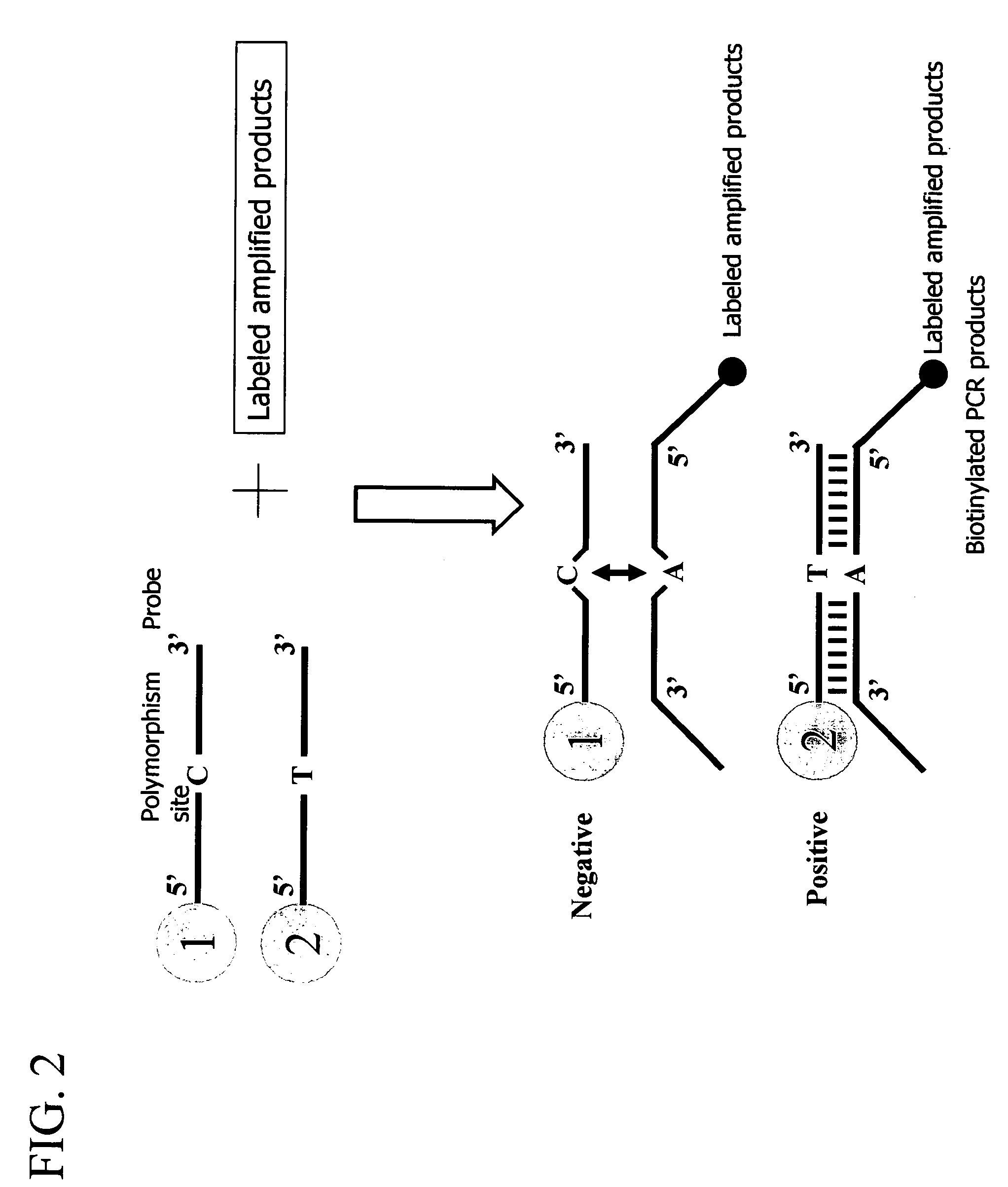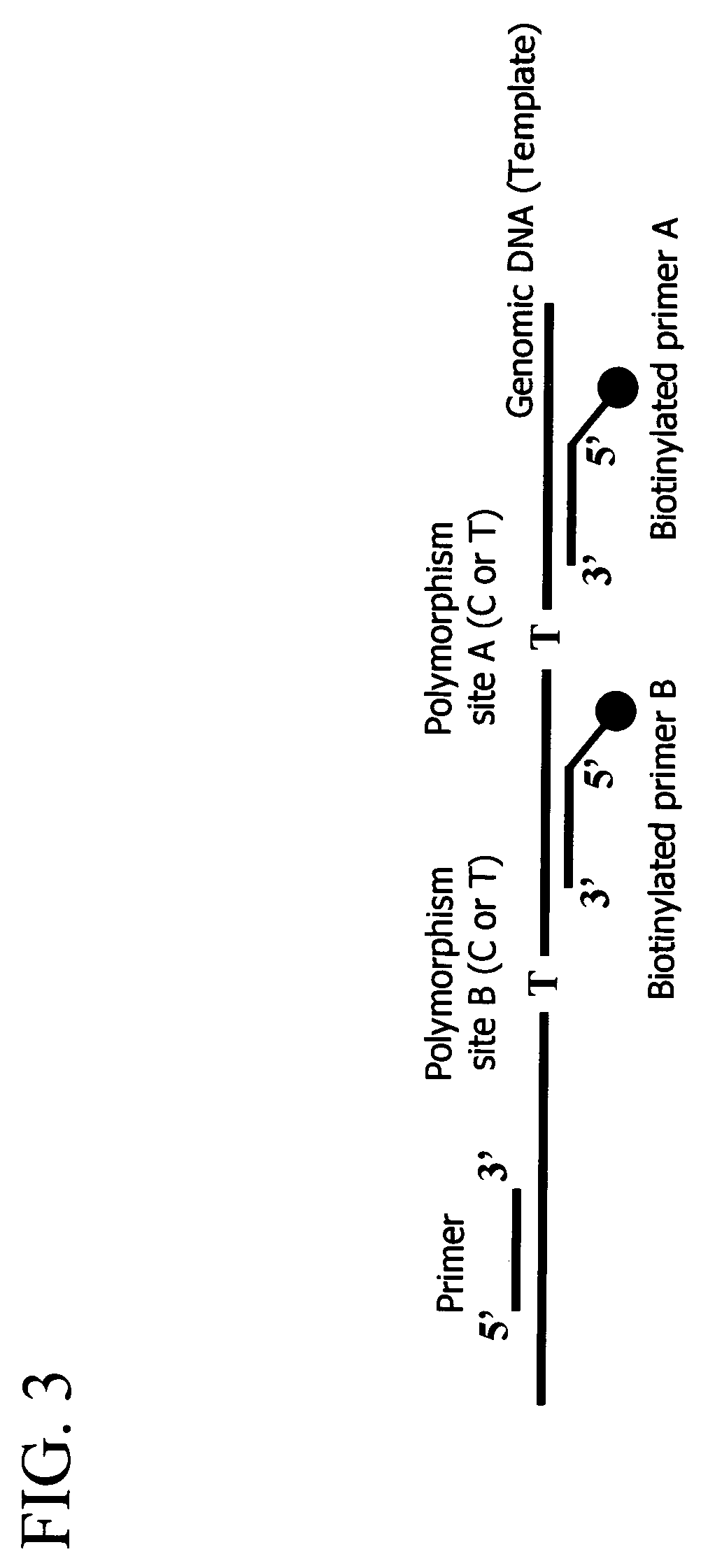Method for detecting a nucleic acid comprising asymmetrical amplification
a nucleic acid and asymmetrical technology, applied in the field of nucleic acid detection methods, can solve the problems of high cost, difficult to obtain the target amplification product, and difficulty in labeling after pcr, and achieve the effect of high sensitivity
- Summary
- Abstract
- Description
- Claims
- Application Information
AI Technical Summary
Benefits of technology
Problems solved by technology
Method used
Image
Examples
examples
[0056]Hereinafter, the present invention is explained in more detail with reference to examples. However, the technical scope of the present invention is not limited to the following examples.
1) Purpose
[0057]The purpose is to prepare labeled single-stranded DNAs from a genome and the like without being inhibited from obtaining amplification products stably, and to demonstrate ultimately an effect of enhancement in detection sensitivity.
2) Principle
[0058]In the present example, gene amplification was carried out by the polymerase chain reaction (PCR) using a genomic DNA as a template. Then the amplified products were hybridized to a probe immobilized to a carrier, and measurement of the presence and absence of the hybridization was carried out with the reverse sequence-specific oligonucleotide (rSSO) method for detection of a mutation.
3) Materials
[0059]In the present example, an aldehyde dehydrogenase gene was used as the template DNA. The target mutation site was a nucleotide at pos...
PUM
| Property | Measurement | Unit |
|---|---|---|
| pH | aaaaa | aaaaa |
| concentration ratio | aaaaa | aaaaa |
| concentration | aaaaa | aaaaa |
Abstract
Description
Claims
Application Information
 Login to View More
Login to View More - R&D
- Intellectual Property
- Life Sciences
- Materials
- Tech Scout
- Unparalleled Data Quality
- Higher Quality Content
- 60% Fewer Hallucinations
Browse by: Latest US Patents, China's latest patents, Technical Efficacy Thesaurus, Application Domain, Technology Topic, Popular Technical Reports.
© 2025 PatSnap. All rights reserved.Legal|Privacy policy|Modern Slavery Act Transparency Statement|Sitemap|About US| Contact US: help@patsnap.com



